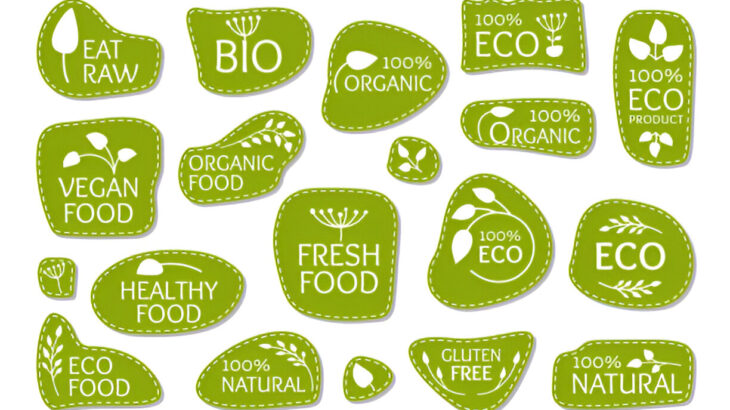When you’re at the grocery store, food labels like Decoding Organic vs. Non-GMO Labels can be confusing. These labels sound similar, but they mean different things. Understanding the difference helps you make choices that match your values and health goals. Here, we’ll explore what organic and non-GMO labels mean, how they are regulated, and what they tell you about the food you’re buying.
What Does “Organic” Mean?
The term organic refers to the way foods are grown and processed. Organic farming focuses on using natural methods rather than synthetic ones. This means organic crops are grown without:
- Synthetic pesticides or herbicides
- Artificial fertilizers
- Genetically modified organisms (GMOs)
Organic farming also emphasizes soil health and animal welfare. For instance, animals raised on organic farms must be fed organic feed and have access to outdoor spaces. The idea behind organic farming is to produce food in a way that’s good for the environment and safe for people.
In the United States, the USDA Organic label ensures that the product meets strict organic standards. Foods with this label have been checked by a third party to make sure they follow the USDA’s organic guidelines. This label also means that at least 95% of the ingredients in a product are organic.
What Does “Non-GMO” Mean?
The non-GMO label focuses on one specific thing: it means that the product does not contain genetically modified organisms (GMOs). A GMO is a plant or animal that has been changed using genetic engineering. This process can add traits to a crop, such as making it resistant to pests or able to grow in harsh conditions.
The Non-GMO Project Verified label is a common certification that checks for GMOs. Foods with this label have been tested and found to be free from GMOs. However, it’s important to note that non-GMO products can still be grown with synthetic pesticides or fertilizers. The non-GMO label only tells you that the food does not contain GMOs; it doesn’t tell you about other farming practices used.
Key Differences Between Organic and Non-GMO
Now that we know what each label means, let’s look at the main differences:
- Scope of Standards
- Organic certification covers many aspects of farming, including soil health, pest control, and animal welfare.
- Non-GMO certification only focuses on the absence of genetically modified organisms.
- Use of Pesticides and Fertilizers
- Organic farms cannot use synthetic pesticides and fertilizers.
- Non-GMO farms can use synthetic pesticides and fertilizers, as long as they don’t use GMOs.
- Animal Welfare
- Organic standards require that animals are treated humanely and are given access to outdoor areas.
- Non-GMO standards do not cover animal welfare.
- Environmental Impact
- Organic farming practices are generally better for the environment because they avoid synthetic chemicals and focus on sustainable farming.
- Non-GMO farming does not have to follow these environmental standards.
Which Is Better: Organic or Non-GMO?
Deciding between organic and non-GMO depends on what matters most to you:
- If you’re concerned about pesticides and chemicals, organic is the best choice since it avoids synthetic pesticides and fertilizers.
- If you’re mainly focused on avoiding GMOs, non-GMO labels offer assurance that the product has been tested and does not contain GMOs.
- If you care about animal welfare, organic products are usually a better option because organic farming includes animal welfare standards.
It’s important to remember that some products may have both labels. For example, you can buy organic, non-GMO corn. This means the corn was grown without GMOs and met organic farming standards.
Why Do Food Labels Matter?
Food labels help us make informed choices. When you know what each label stands for, you can decide what’s best for you and your family. Some people choose organic for environmental reasons, while others avoid GMOs because they prefer foods made without genetic engineering. By understanding these labels, you can find products that match your values.
How to Make the Best Choice
The next time you’re at the grocery store, take a moment to look at the labels on your food. Consider what’s important to you:
- If you want a food that’s grown in an environmentally friendly way, look for the organic label.
- If you want to avoid GMOs, look for the non-GMO label.
Some people find it helpful to do a little research on the brands they buy to understand more about their farming practices. Remember, labels are there to help you make choices that support your health, the environment, and your personal beliefs.
In Conclusion
Understanding organic and non-GMO labels can help you shop smarter. Organic means the food was grown without synthetic chemicals and meets strict farming standards, while non-GMO means the product is free of genetically modified organisms. Both labels have value, but they focus on different aspects of food production.
Next time you’re buying food, check the labels to see what they say. Knowing the difference between organic and non-GMO labels will give you confidence in choosing foods that are best for you and the planet!
